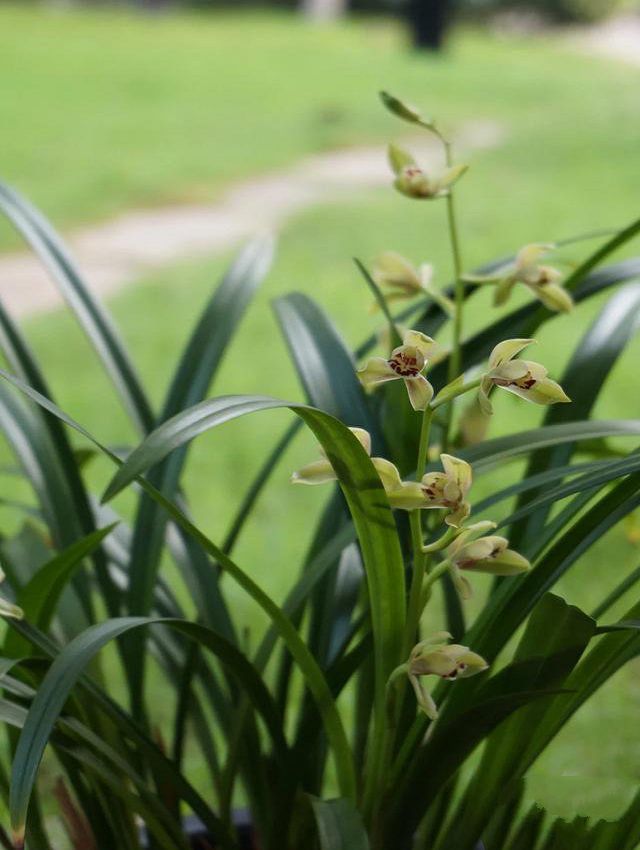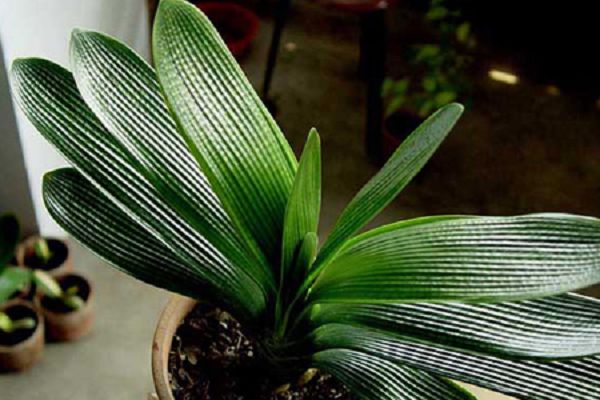How do you get yellow leaves, five steps to restore it to life?
When people raise magnolia in their daily life, it is inevitable that the leaves will turn yellow, because some people may forget to water them for some reason, resulting in the leaves of magnolia will turn yellow. so most people still don't know what to do when the leaves turn yellow. in fact, as long as you follow the method taught by the editor, you can bring the orchid back to life in a few days.
First, what if the leaves of Cymbidium turn yellow
1. Temperature leads to yellowing of leaves.
The demand for the growing environment of the gentleman orchid is not too harsh, as long as it is at a constant temperature of more than 20 degrees. All can survive, and there will be no yellowing of leaves at all, but when the temperature in the air is higher than 30 degrees, it will enter a semi-dormant state, and the leaves of Magnolia will gradually turn yellow. If you find this phenomenon, you should deal with it in time.
Solution: usually when people breed magnolia, they found that this situation should pay special attention to moisturizing control, so that magnolia can survive in a comfortable growing environment, so the leaves will not turn yellow.
2. the leaves will turn yellow if you apply too much fertilizer.
If the orchid is fertilized too much, the concentration is too high, or if the fertilizer is not mature, it will lead to yellow leaves, so in this case, you should stop applying fertilizer, otherwise it will be easy to feed it to death. So people must pay more attention to the process of breeding Cymbidium. Of course, there is a very simple solution to how the leaves of Cymbidium turn yellow.
Solution: after the leaves of Cymbidium are yellowed due to excessive fertilization, the simplest step is to change the soil immediately, then soak the roots with 0.1% potassium permanganate solution for about 20 minutes, then rinse with clean water, dry and then cut off the rotten roots, apply plant ash on the wound, and then replant.
3. Light causes the leaves of Cymbidium to turn yellow.
Although the magnolia is a semi-positive plant, it is not suitable for irradiation in strong light, because it is easy to cause the leaves to turn yellow, and the light ones will cause the leaves to change from green to yellow, and the heavy ones will directly dehydrate the leaves until they die. however, if the light is too dark and the light is insufficient for a long time, it will also make the leaves lose their luster.
Solution: when it is found that the leaves of Cymbidium are yellowed, some measures should be taken in time. You can choose to put the orchid under the balcony and cover it with a piece of translucent cloth, so that it can regain its vitality. Because Magnolia prefers places with weak light.
4. Too much watering will also lead to yellowing of leaves
Magnolia is a wet plant, and the most suitable relative humidity range is 70%-80%. Generally, exceeding this range will cause the soil in the basin soil to become dry, which will also affect the growth state of Magnolia. We must pay attention to it when watering, because this behavior hinders the normal respiration of plants, resulting in root rot and even death.
Solution: usually when watering, it is necessary to keep the basin soil dry and thoroughly watered. Watering can be best at 8-9 o'clock in the morning, use tap water 2-3 days later, and then water it according to the size of the basin and the dry and wet condition of the soil, and this is very important in how to deal with the yellowing of Cymbidium leaves.
5. The hard soil will also cause the leaves to turn yellow.
Gentleman orchid likes loose and fertile sandy soil, soil consolidation and insufficient supply of fertilizer will make the leaves yellow and affect flowering. In general, fertilization can be applied in spring and autumn within a year, and in the process of maintaining Cymbidium, the soil must be changed once a day, because when the temperature of the conservation site is above 25 ℃, it is necessary to lose weight or stop fertilizing, so as not to fertilize too much to burn the fleshy root.
Solution: the gentleman orchid has a very high demand for soil quality. When you see the leaves yellowing in the process of maintenance, you must deal with them in time, and the rotten leaves must be fermented before they can be used, and the roots can be burned easily without fermentation. otherwise, it will directly affect the growth of plants.
II. Key points for attention in the maintenance of Cymbidium
1. No work, no watering
The gentleman orchid is a fleshy root, so you can't water too much, otherwise it is easy to have rotten roots, and watering at the right time can keep the basin soil moist, but the most important thing is not to dry it. If you want to water it, you have to water it thoroughly.
2. It is best to apply fertilizer in winter
Magnolia grows fastest in winter, so it is important to apply winter fertilizer well. Before the flowerpot enters the house, use bone meal, fried sesame seeds, cooked soybeans, etc., or compound fertilizer, water every 15 to 20 days, remember to fertilizer must be mature and light fertilizer, to prevent thick fertilizer.
3. You must get indoor maintenance when the weather is cold.
The most suitable temperature for the growth of Cymbidium is 15 ℃ to 25 ℃. When it is 10 ℃, the orchid will stop growing, and the difference in temperature will also cause the orchid not to blossom, so when the weather is cooler, it is best to move the orchid indoors for maintenance.
Related
- Is the orchid suitable for indoor use? Is it good for the body?
- How to prevent the empty root of orchids?
- What to do after the crab claw orchid is withered?
- Why are the leaves of orchids always yellow? Fertilizing and watering.
- Can the root of the gentleman orchid be saved if it is rotten?
- Diagnosis and treatment of cotton-blowing beetle insects in Cymbidium
- There is a way for a gentleman's orchid to rot.
- What is the most suitable temperature and humidity for the orchid?
- How to raise a gentleman's orchid? Cultivation techniques of Cymbidium
- How to prepare the nutritive soil for the cultivation of Cymbidium



